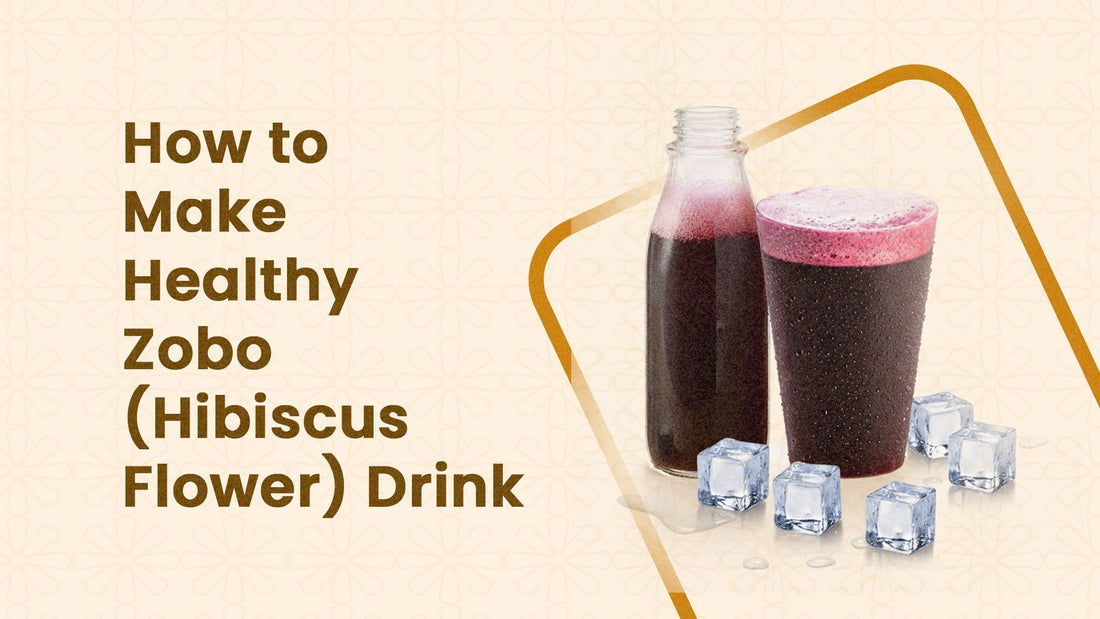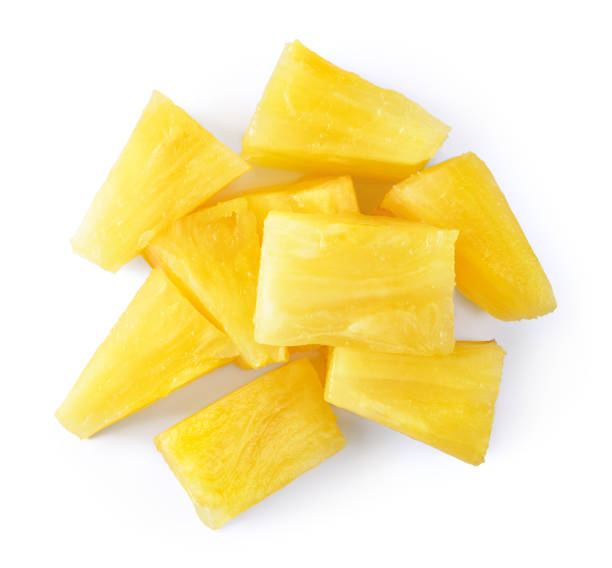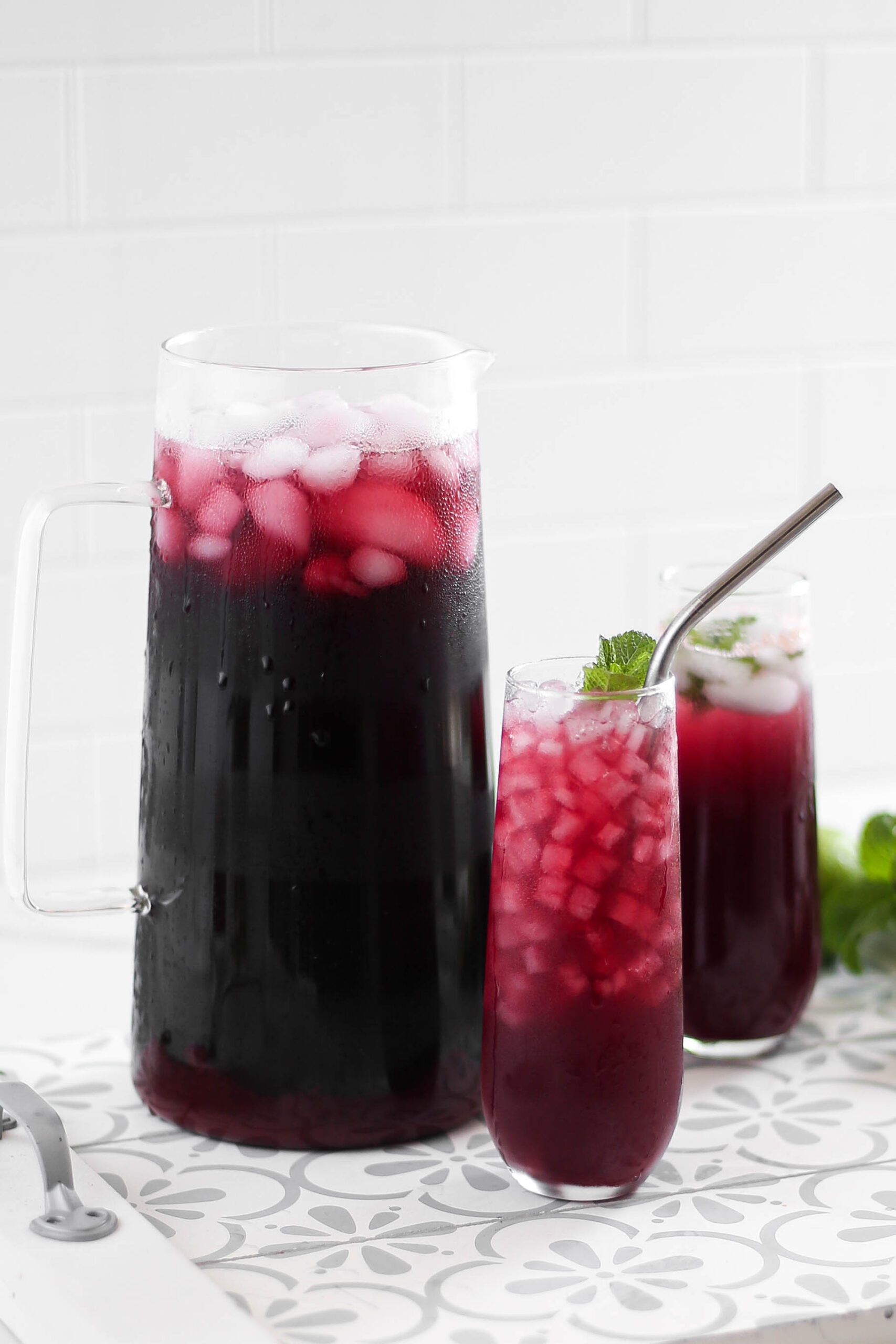
How to Make Healthy Zobo (Hibiscus Flower) Drink
Share
There's something about the deep ruby-red color of zobo drink that stops you mid-reach at Nigerian parties. Before you even taste it, you know you're about to experience something special. That tart-sweet flavor, the hint of spice, the way it cools you down on a hot afternoon—zobo isn't just a drink. It's a tradition, a remedy, and increasingly, a health trend that the rest of the world is finally catching up to.
While wellness influencers in New York and London are just discovering "hibiscus tea," Nigerians have been brewing zobo for generations. But here's what most people don't know: the way you make zobo determines whether you get a sugar-laden party drink or a genuinely healthy beverage packed with benefits. This guide shows you how to make the healthy version—the kind that actually deserves all the health claims you've heard.
What is Zobo, Really?

Image from: Sisi Jemimah
Zobo comes from the Hausa word for the edible Hibiscus Sabdariffa plant and the drink made from its dried red calyces. These are the fleshy, jewel-toned sepals that surround the hibiscus flower after the petals fall. When dried, they become the deep burgundy leaves you find at Nigerian markets, often sold in clear bags or loose at market stalls.
Originally associated with the Hausa people of Northern Nigeria, zobo gradually became popular across the entire country. Now it's the drink of choice at student parties, family gatherings, weddings, and increasingly, in the homes of health-conscious Nigerians who've realized what they've been drinking all along is actually a superfood.
The Health Benefits You're Actually Getting
Let's talk about why zobo deserves its reputation as a health drink—when made correctly.
Zobo stands out for its potent antioxidant properties, primarily due to its high content of anthocyanins and vitamin C. These aren't just buzzwords—anthocyanins are the compounds that give zobo its deep red color and its ability to fight inflammation and potentially protect against certain cancers.
Research shows that zobo helps lower levels of bad LDL cholesterol, thereby helping protect against heart diseases and protecting blood vessels from damage. This is significant. Heart disease is a leading cause of death globally, and here's a traditional drink that actively supports cardiovascular health.
The high vitamin C content helps boost your immune system, while the natural antioxidants in hibiscus and ginger promote good digestion and circulation. The drink is also naturally low in calories—assuming you don't add sugar, which we'll address.
Other benefits include helping to reduce menstrual discomfort, supporting healthy blood pressure levels, and providing natural hydration that's far superior to artificially colored and flavored beverages.
Also read: How to Make Banga Soup and Starch: A Niger Delta Cuisine
The Problem with Most Zobo Recipes
Here's the uncomfortable truth: most zobo served at parties is basically sugar water with hibiscus coloring. The health benefits get completely negated when you add two cups of sugar to every pot. That's not a health drink—that's flavored syrup.
The traditional party zobo recipe often includes condensed milk, excessive sugar, and artificial flavorings that mask the natural tartness of hibiscus. While this makes it taste like dessert (and there's nothing wrong with that occasionally), it's not the health drink that hibiscus tea is meant to be.
The healthy version we're making today embraces the natural tartness of zobo, uses minimal natural sweeteners, and lets the spices and fruit do the flavor work.
Essential Ingredients for Healthy Zobo
Core Ingredients:
- 2 cups dried hibiscus leaves (zobo leaves) - The foundation of everything. Look for leaves that are deep red, not faded or brown. Fresh, quality hibiscus makes all the difference.

- 8 cups water - For steeping and brewing.

Image from: WaterWorld Magazine
- 1-inch piece fresh ginger - Peeled and sliced. Fresh ginger adds warmth and aids digestion.
Image from: Vitae Health Innovation
- 1 small pineapple - Peeled and chopped, or 2 cups pineapple peels (don't waste them!). Provides natural sweetness and tropical flavor.

Image from: iStock
- 10-12 whole cloves - For that warm, aromatic spice note.

Image from: Britannica
- 1 cinnamon stick - Adds depth and natural sweetness perception.

Image from: Healthline
- Optional natural sweetener: Honey, dates, or agave (use sparingly—start with 2-3 tablespoons and adjust)
Optional additions:
- Orange or lemon slices (for citrus notes)
- A few mint leaves (for freshness)
- 1 teaspoon vanilla extract (for depth)
What You Won't Need:
No condensed milk. No refined sugar. No artificial flavors. No food coloring (the hibiscus provides that gorgeous color naturally). No citric acid powder (the fruit provides natural acidity).
Step-by-Step: Making Healthy Zobo
Preparation Phase (10 minutes)
Rinse your dried hibiscus leaves thoroughly under cold water. This removes any dust or debris from storage. Don't skip this step—you're about to steep these in water you'll drink.
Peel and slice your ginger into thin rounds. The thinner, the more flavor it releases. Chop your pineapple, reserving the peels if you're using them (pineapple peels add incredible flavor and it's a great way to reduce waste).
Brewing Phase (30-40 minutes)
In a large pot, bring 8 cups of water to a boil. Once boiling, remove from heat and add your hibiscus leaves, ginger slices, cloves, and cinnamon stick. The hot water will begin extracting the rich color and tart flavor from the hibiscus immediately.
Add your pineapple chunks or peels to the pot. The heat will release the natural sugars and tropical flavor. Cover the pot with a lid and let everything steep for 30-40 minutes. The longer it steeps, the deeper the flavor and color become.
You'll notice the water transforming into that signature deep ruby red. This is the anthocyanins releasing from the hibiscus—those powerful antioxidants we talked about.
Straining and Sweetening (10 minutes)
After steeping, strain the liquid through a fine mesh strainer or cheesecloth into another pot or large pitcher. Press gently on the solids to extract all the flavorful liquid, but don't press too hard or you'll get sediment.
Discard the solids (or compost them—they make excellent garden material).
Now comes the crucial part: sweetening. Taste your zobo first. It will be tart, almost bracingly so. This is normal and healthy. Start with 2 tablespoons of honey or your chosen natural sweetener. Stir, taste, and add more if needed. Remember, you can always add sweetness, but you can't remove it.
The goal is to balance the tartness, not eliminate it. The slight tang is part of what makes zobo refreshing and is a sign of its beneficial acids.
Chilling and Serving
Let your zobo cool to room temperature, then refrigerate for at least 2 hours. Zobo is best served cold, though some people enjoy it warm as an herbal tea.
Serve over ice in tall glasses. Garnish with fresh mint leaves, a slice of orange, or a cinnamon stick for visual appeal. The deep red against clear ice is stunning.

Image from: Kikifoodies
Pro Tips for Perfect Healthy Zobo
Quality matters more than quantity: Two cups of fresh, vibrant hibiscus leaves will make better zobo than three cups of old, faded ones. Source your hibiscus from L'Afrique Market where they stock fresh, properly stored zobo leaves that still have their full flavor and nutritional potency.
Don't rush the steeping: The 30-40 minute steep time isn't optional. This is when the antioxidants, flavor compounds, and color fully extract. Rushing this gives you weak, pale zobo that's disappointing.
Use pineapple peels: This is a traditional trick. Pineapple peels contain natural enzymes and sugars that add incredible depth to zobo. Wash them thoroughly, use them in your brew, and feel good about reducing waste.
Adjust spices to taste: If you love ginger, add more. If cloves are too strong for you, use fewer. Zobo is forgiving and welcomes your personal touch.
Consider a second steep: After straining, you can add the solids back to fresh boiling water for a lighter "second steep" zobo. It won't be as intense, but it's still flavorful and extends your batch.
The Sugar Conversation: How Sweet Should Zobo Be?
Traditional party zobo can contain 1-2 cups of sugar per batch. That's roughly 200-400 grams of sugar in a single pitcher. When you're trying to make a healthy drink, this defeats the purpose entirely.
For truly healthy zobo, aim for no more than 3-4 tablespoons of natural sweetener per 8-cup batch. This works out to less than a teaspoon of sweetener per glass. The pineapple provides natural sweetness, and your palate will adjust to appreciate the tart flavor.
If you're transitioning from super-sweet zobo, start with a bit more sweetener and gradually reduce it over several batches. Your taste buds adapt faster than you think.
Consider serving honey or agave on the side, letting people sweeten their own glass to preference. This puts control in their hands and ensures you're not over-sweetening for everyone.
Storage and Shelf Life
Properly made and stored zobo lasts 5-7 days in the refrigerator in an airtight container. The flavor actually improves after a day as the spices continue to infuse.
You can freeze zobo in ice cube trays, then transfer the cubes to freezer bags. Use these to chill drinks without diluting them, or blend them into smoothies for a nutritional and flavor boost.
If your zobo starts to smell fermented or develops an off taste, discard it. The natural sugars can ferment if left too long, especially in warm conditions.
Variations to Try
Zobo with Citrus
Add slices of orange, lemon, and lime during the steeping phase for a citrus-forward version that's incredibly refreshing.
Spiced Zobo
Increase the cinnamon and cloves, add a few cardamom pods and a star anise for a warming, chai-like version perfect for cooler evenings.
Tropical Zobo
Add coconut water instead of plain water for part of the liquid. Include passion fruit pulp or mango chunks along with the pineapple.
Minty Zobo
Add a generous handful of fresh mint leaves during steeping, then garnish with more mint when serving. The mint-hibiscus combination is phenomenally refreshing.
Ginger-Forward Zobo
Double or triple the ginger for a version with serious zing. This is excellent for digestion and adds warming heat that balances the tartness.
Serving Suggestions and Pairings
Zobo pairs beautifully with rich, savory Nigerian dishes. The tartness cuts through the richness of jollof rice, fried rice, or suya. It's the perfect accompaniment to small chops at parties—puff puff, spring rolls, samosas—providing palate-cleansing refreshment between bites.
For breakfast or brunch, serve zobo alongside akara and bread, or with moi moi. The drink's vitamin C enhances iron absorption from these bean-based dishes.
As a mocktail base, zobo is unbeatable. Mix it with sparkling water for a fizzy version, blend it with fresh fruit for a smoothie, or use it as the base for creative non-alcoholic cocktails at gatherings.
Why Ingredient Quality Matters

Image from: Dobby's Signature
The difference between exceptional zobo and mediocre zobo often comes down to ingredient quality. Old hibiscus leaves that have been improperly stored lose their vibrant color, their tart flavor, and crucially, their antioxidant potency. You're not just losing taste—you're losing health benefits.
Fresh spices make a noticeable difference too. Cloves that still smell intensely aromatic, cinnamon that hasn't gone stale, ginger that's firm and juicy—these create layers of flavor that elevate your zobo from "nice" to "can I have the recipe?"
This is where sourcing from L'Afrique Market becomes valuable. They understand that zobo leaves need to be fresh, properly dried, and stored correctly to maintain their quality. Their spices are aromatic and potent, not the dusty, flavorless versions you sometimes encounter.
When you start with quality ingredients, you don't need excessive sugar or artificial enhancers to make your zobo taste good. The ingredients do the work themselves.
Common Mistakes to Avoid
Mistake 1: Over-sweetening out of habit Trust the process. Let the tartness shine. Your palate will adjust and you'll come to love the natural flavor.
Mistake 2: Using boiling water throughout Remove the pot from heat before adding hibiscus. Continuously boiling can make the drink bitter and destroy some beneficial compounds.
Mistake 3: Squeezing the hibiscus leaves too hard when straining This releases sediment and can make your zobo cloudy and slightly bitter. Gentle pressing is enough.
Mistake 4: Not steeping long enough The 30-40 minutes isn't a suggestion. Shortcuts here give you weak zobo that doesn't deliver on flavor or health benefits.
Mistake 5: Using metal utensils exclusively The acids in hibiscus can react with some metals. Use wooden spoons for stirring and glass or stainless steel containers for storage.
The Health Claims: What's Real?
Let's separate fact from fiction. Zobo does support heart health through its cholesterol-lowering properties—this is backed by research. It does provide antioxidants that fight inflammation. It does contain vitamin C that supports immune function.
What it won't do: cure diseases, cause dramatic weight loss on its own, or replace medical treatment for serious conditions. It's a healthy beverage that supports overall wellness, not a miracle cure.
The key is consistency. Drinking zobo regularly as part of a balanced diet contributes to your overall health. Having one glass won't transform your health, but making it a regular part of your routine—alongside other healthy choices—does make a difference.
And here's an important note: if you're on blood pressure medication, talk to your doctor before drinking zobo regularly. It does have blood pressure-lowering effects, which is generally positive, but could interact with medications.
Making Zobo a Healthy Habit

Shop Zobo Leaves at L'Afrique Market
The beauty of zobo is how easily it fits into daily life. Make a large batch on Sunday, store it in the fridge, and you have a healthy drink ready all week. This prevents reaching for sodas, artificially sweetened drinks, or other less nutritious options.
Pour it into a reusable water bottle for work or gym. The caffeine-free nature means you can drink it any time of day without affecting sleep. The natural tartness is surprisingly satisfying and can help curb cravings for sweet drinks.
Consider making zobo ice cubes and adding them to plain water throughout the day. You get subtle flavor and a nutritional boost without drinking full-strength zobo constantly.
Teach your children to enjoy it young. Kids who grow up drinking naturally flavored beverages like zobo are less likely to crave artificially sweet sodas. Start with a slightly sweeter version if needed, gradually reducing sweetness as their palates develop.
Conclusion: Reclaiming Zobo as a Health Drink
Zobo has always been more than just a party drink. It's been a traditional remedy, a cooling beverage in hot climates, and a source of nutrition hiding in plain sight. The fact that it's also delicious is almost secondary to its genuine health benefits.
By making it the healthy way—minimal sweetener, quality ingredients, proper brewing technique—you're not just making a drink. You're participating in a tradition that spans generations while making choices that support your health.
The deep ruby color in your glass represents anthocyanins fighting inflammation. The tart taste signals beneficial acids supporting your digestion and metabolism. The aromatic spices add not just flavor but genuine therapeutic properties.
Start with quality hibiscus leaves from L'Afrique Market, follow these techniques, and discover what zobo is supposed to taste like. Not candy-sweet party punch, but a sophisticated, refreshing, genuinely healthy beverage that honors both tradition and wellness.
